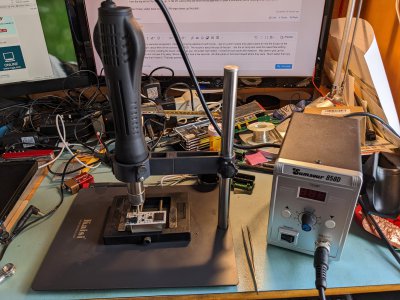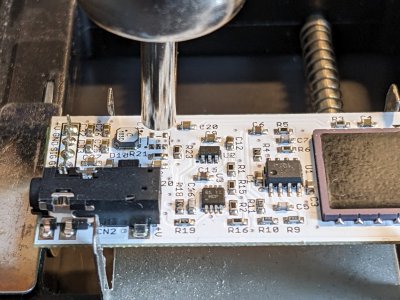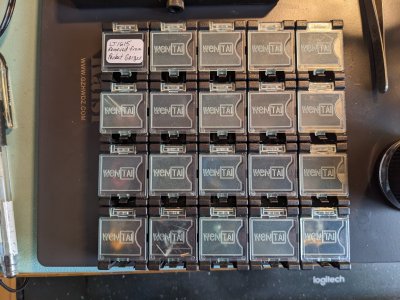- Joined
- May 27, 2016
- Messages
- 3,480
You can remove it's power connection. Alternatively, you might use a scriber, or a compass end, and repeatedly stab it until it stops.I have two 2032 coin cell holders I could use, or two 18650 cells. The 2032's seem to run around 3V, whereas the 18650's fully charged are 4.2V each. Coin cells are a lot more compact! So ~ 6V vs 8.4V. The coin cells are a bit safer. Probably use them for the bias. Might use the 8.4V for powering the unit. Got to figure out how to shutdown the switcher first.
More practical is to remove the L1 inductor, and remove R20. You can connect your bias battery to one end of C20. The 100K of R3 should mean that inadvertent forward bias would not hurt anything. The 9V supply comes off that same switcher, though it is post-regulated by U2. That means you need an alternative 9V, except you don't. It can as easily be 5V, or 2.5V.
For long term good behavior of a battery with only a tiny current of nA going out, I would use the lithium, but if you have some other batteries available, that's OK. The main property it needs is just to be a battery.
In that circuit, the "negative" supply is 0V, and the LMC662s are operated between that and +9V. The resistor chain R1, R15, R16, R2, offset the signal, to go through the opamps without crashing the rail. The simulations show that it fails to do this.
Last edited:




